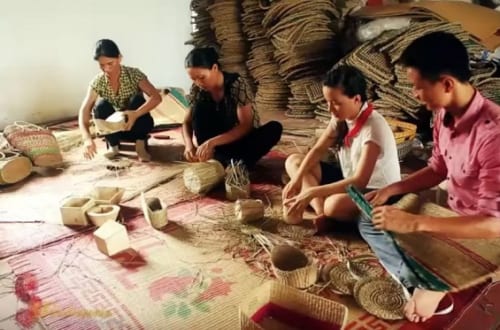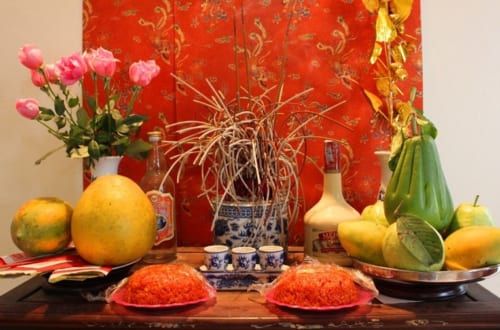
Ao Dai Vietnam, an icon
Table of contents
Ao Dai , a Vietnamese icon
The Ao Dai , or traditional feminine outfit of Vietnam, has become one of the strong symbols of the country with yokes, inseparable from the elegant simplicity of the Vietnamese woman, but also, through its history, from the soul of an entire people. . More than a simple garment, the Ao dai (pronounced: ao zai ) symbolizes the past and the future, tradition and modernity, modesty and sensuality.
The Ao Dai , history and politics
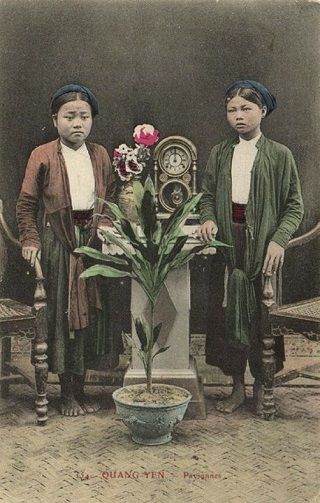
More than 300 years ago, this “clothing that covers everything but hides nothing” marked a form of adaptation of the country’s identity in the face of foreign influences. Then, over the years, the long tunic (meaning of Ao Dai ) will ceaselessly affirm the identity of a nation.
Historically – and to make a long story short – the ancestor of the Ao Dai was a 4-panel shirt. Traces of which have been found in engravings on bronze drums dating back several thousand years. It will be worn until the reign of the Nguyen dynasty. With some changes, including shorter sides, so as not to hinder work in the fields. This 4 – panel outfit , called Ao tu than , is still worn today, mainly at folk festivals and other cultural events.
The Ao Dai of Vietnam that we know today was designed in the 1930s. Or rather redesigned on the basis of a cup dating from the 18th century.
Origins
We are in 1744. Nguyen Phuoc Khoat , 8th Nguyen lord of his state, head of Dang Trong , that is to say of present-day Central Vietnam (the South at the time), got wind of a disastrous prediction for his power. This prophesied: “After eight periods, return will be made to Trung Do”. Trung Do designating the imperial capital Thang Long, today Ha Noi. Sieur Khoat having counted 7 successive ancestors before him. Summoned the ban and the back ban of his mandarins for a session of brain storming .
And that ‘s how Ao Dai was born in Vietnam ! Here is the proof. If he wanted to establish an identity distinct from his northern rivals – the Trinh lords, who enjoyed the status of regents over the puppet kings of the declining Lê dynasty. Khoat had to stand out. Change everything, to show its very southern difference, starting with the administrative structures. Neither one nor two, one fine morning in the year of grace 1744, the South (which is today the Center), under the power of the Nguyens for more than a century, woke up under the title of Vuong Quoc .
Exit Ao Tu Than, hello Ao Dai
In the process, Nguyen Phuoc Khoat establishes a royal seal, a new court music, new governmental procedures, a new civil code. In short, he sets up another culture. Which also goes through the clothes. Exit Ao Tu than , Xin chao Ao Dai ! Khoat decrees the wearing of women’s pants with buttons but keeps the 4-panel tunic that comes over said pants. This outfit will be worn by both women and men.
This might pass for anecdotal. But when we know that the Ao Dai in question borrowed largely from the style of clothing worn by the Cham – the first inhabitants of the southern lands, including the kingdom of Champa (now Central Vietnam) – one cannot help thinking that Lord Khoat diplomatically showed his respect for the culture of the Cham in order to gain their support. Imposing a garment so as not to take a jacket from your rivals, you had to dare. It was at this time, in 1775, that the famous scholar Le Quy Don will mention the term Ao Dai in his book “Phu Bien Tap Luc ”.
This is how, from a political action, a costume was born that will become traditional…
Ao Dai in the XIX
Under the reign of Gia Long (1802-1819), the costume spread (almost) uniformly from North to South. It took the opportunity to adorn itself with a fifth panel, with the avowed aim of differentiating between families of royal blood and mandarins others with their ridiculous four sides. He will then take the name of Ao ngu than – ngu in Sino-Vietnamese meaning “five”.
Over time, the 2 sides of the front and their twins behind, initially free, are sewn to finally give a front side and a single back side. Giving this nascent 20th century the almost definitive shape of the Ao dai. As we know it today. In February 1820, Minh Mang succeeded Gia Long. Among other things, ordered to unify the costume of the North and the South, thus the dress of the great evenings became the national costume.
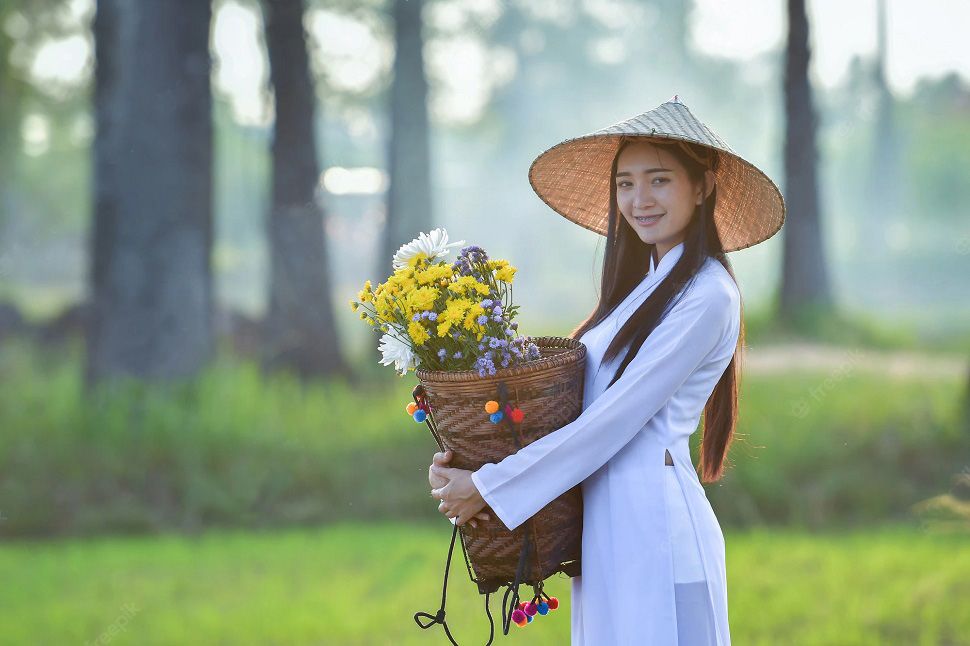
Ao dai , a modern story
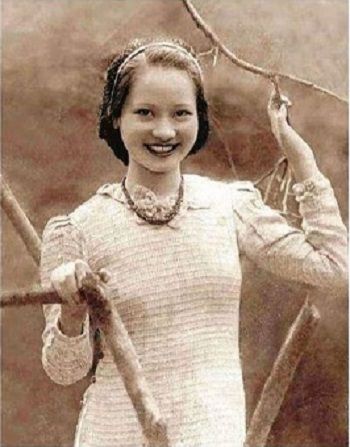
Ao Dai, Le Mur
The 1930s-1940s marked an important stage in the evolution of Ao dai in Vietnam. At the beginning of the 1930s, France inaugurated the Indochina College of Fine Arts (today Hanoi University of Fine Arts). This venerable establishment will welcome – among others – the painter Nguyen Cat Tuong. He will be known as Lemur or Le Mur (“Mur” being the literal tradition of Tuong ). He will have the audacity to combine the design of the Ao Ngu Than to the cuts of French dresses. Rocking the Ao Dai in a simplicity exhilarated with sensuality.
The tunic is made up of two sections sewn together and surmounted by a collar. The waist is slightly marked, the collar, buttons and sleeves are Western style. Shortcut at the calf, the Ao dai Lemur gets closer to the body, replaces the ao yem camisole with the French bra. A scandal for the time, which did not conceive that a woman could thus outrageously show her forms.
The Ao dai “Le Mur” was usually worn with white pants (teeth gritted , since normally reserved for men). General look draws a European aesthetic while keeping a strong Vietnamese personality. The audacity (and a little genius) of Le Mur will have made the Ao dai glam and chic. And those who wear it, more emancipated. Four years later, another painter, named Lê Pho , will remove the puffed sleeves (too Western). He will close the neckline and if he visibly drew his inspiration from the Ao tu than , he would bring everything even closer to the body, maddening the morals and the gaze of men even in the 1940s.
Ao Dai , Lê Pho
The design of Lê Pho was also ideological. Women who wear the ao The Pho define themselves as still respecting tradition, but do not reject modernity. What they reject is simply a European identity associated with colonialism. Moreover, that worn by men, it represents the old pre-colonial regime, but worn by women , the Ao Dai represents modernity, “extravagance and futility” associated with capitalist waste. In both cases, it is silently and elegantly displaying the rejection of colonialism, by wearing a non-Western clothing identity.
Ao Dai after 1950
The 1950s and after will be very political, including for the Ao dai.
From 1954, following the Geneva agreements, the country was divided in two: the North, under a communist government and the South, under the Republic of Bao Dai , quickly replaced by Ngo Dinh Diem. In the North, classified as a reactionary, bourgeois garment and emblem of colonialism, the Ao dai fell into disgrace. It only came back to life in the 1980s. While it was still worn by women in the South. There is a very interesting anecdote. In 1960, Tran Le Xuan, the sister-in-law of President Ngo Dinh Diem and, in fact, First Lady of the Republic of Vietnam, since the president was single, caused a scandal. She removed the collar of what will be called the Ao dai Le Truan , revealing the base of the neck.
Its evolution in society
Big big scandal. Which will not prevent this small sartorial detail from proclaiming the liberation of the Saigon (and wealthy) woman. Following in this the hippie trend which, for its part. Tended to shorten the bottom of the skirts rather than the top of the tunics. In the same vein, Nguyen Thi Binh , negotiator for the Viêt-Cong at the Paris Peace Conference, will wear the Ao Dai to demonstrate her patriotism. From this era of long hair and minimalist clothing, all that will remain for our Ao Dai is the erotic little triangle of exposed flesh, placed above the waist. Another subject of masculine emotions and other moralistic criticisms.
We are not going to lie to each other, before the 1930s, the Ao Dai was not attractively aesthetic. The ensemble was simple and loose, not flattering at all to the body wearing it. Women may have added flashy necklaces to their Ao Yem like a sort of brassiere that served as a bra. But the result was not the most impressive.
Following years will see the appearance of the communist regime’s ideal clothing. A simple blouse worn over trousers, practical for work, as any socialist citizen should be: simple, frugal, useful to the nation. Then, the Ao dai became a “symbol of foreign decadence”. It will only be worn – timidly but bravely – on special occasions. As a silent demonstration against the regime, as had been the case under colonial rule.
And finally …
The Ao Dai takes its definitive cut with the arrival of the raglan sleeve. Taking its name from a certain Lord Raglan, it is a cut that allows a one-piece armhole. Thanks to a single seam from the armpits to the collarbone, thus facilitating movement. From then on, the now famous Ai Dai will no longer change in depth. Only the decorative motifs will evolve according to the inspirations of fashion designers, as well as the textures and materials.
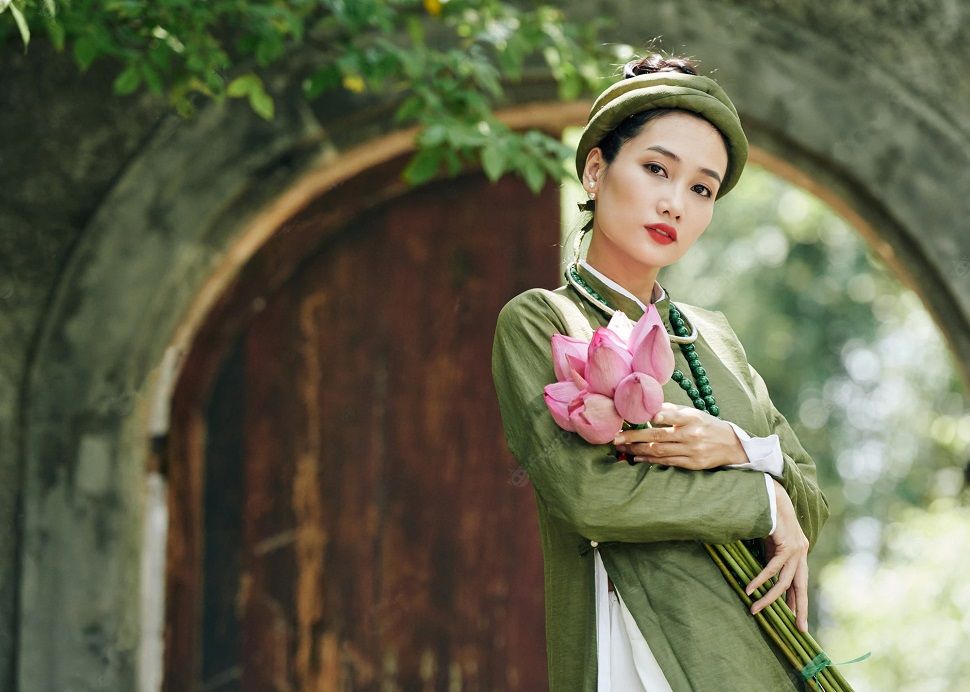
Ao Dai mania
However, suffering from the post-war economic situation, political pressures and foreign economic sanctions, the new communist country plunged into an economic catastrophe that would brand the people with a red iron. At the turn of the 1980s, at the turn of the 1980s, Vietnam launched its so-called policy of Doi Moi, Renewal. Exit simplicity, frugality and utilitarianism, welcome the global market economy . The Vietnamese are entering modernity and are warmly invited to consume . Countless fashion magazines echo the fashion trends of Paris, New York and even Tokyo. Very quickly, the question will arise: but what is the Vietnamese Fashion Trend?
Its comeback in Vietnam
As you will have understood, it will be the strong comeback of the Ao Dai in Vietnam, which, once again, thanks to those who wear it, will carry the identity of the nation. A comeback all the more brilliant as it will be marked in 1995 by the victory of Truong Quynh Mai (Miss Vietnam at the time) at the Miss International Competition in Tokyo. This one paraded in Ao Dai of blue brocade decorated with silver flower pattern, worn on white pants. It is also interesting to note that consumerism having become the new standard of living, it had become essential to dress modern, therefore of foreign brands. It will be enough for designers from other countries to take over the Ao Dai to give it a little something…foreign, which will make it popular with Vietnamese women.
With a Cham-adopted design combining with Western elements of fashion and aesthetics to become a quintessentially Vietnamese product, this stunning piece of clothing is no paradox…


